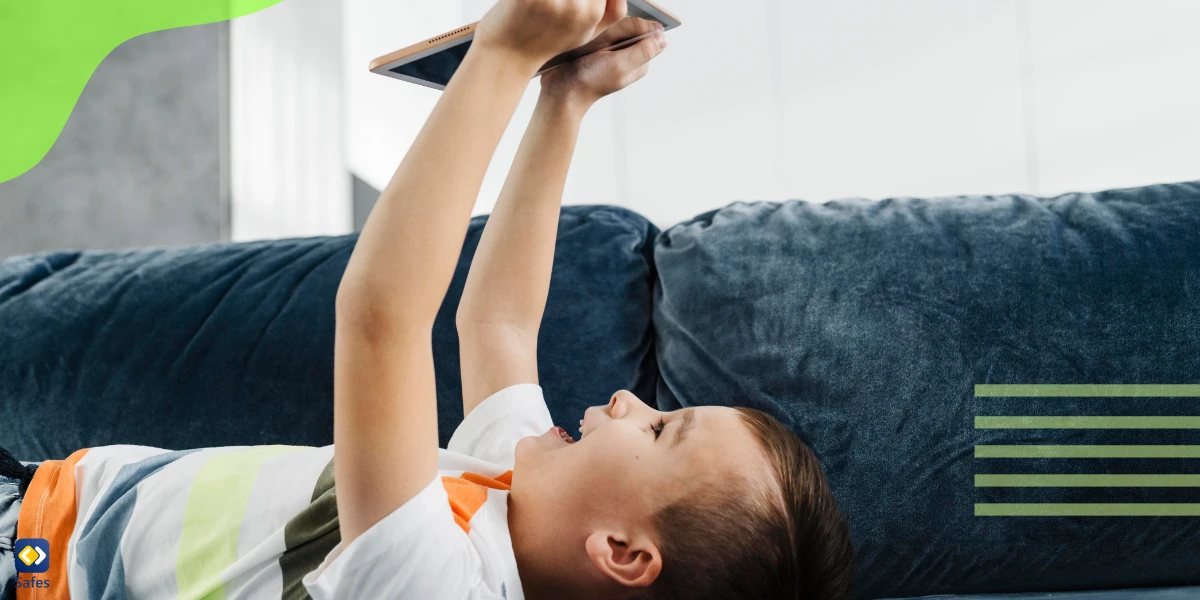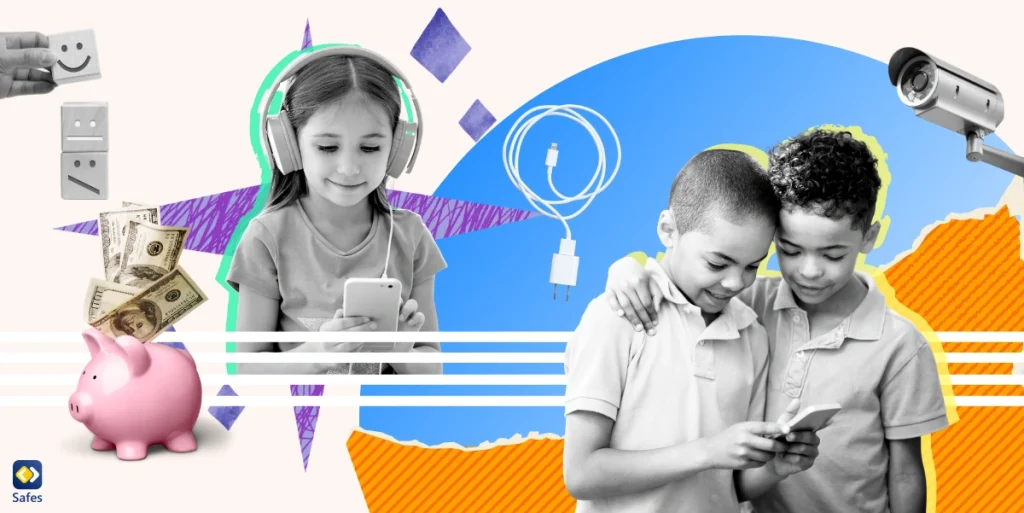Irritability refers to the state where one gets easily annoyed and frustrated. It refers to an excessive sensitivity to anger. It can be occasional – we all wake up one day and feel overly sensitive to exterior factors. On the contrary, this mental state can last longer and become a pattern. As parents, we need to interact with our children on a daily basis. If they’re irritable all the time, it can be hard for us to build a positive connection with them and nurture them. That’s why we need to pay attention to what causes irritability in them and identify the stressors that contribute to it. Many parents today blame the excessive time their children spend on their devices as the common cause of their irritability – and it might not be far from the truth. In this blog post, we’ll talk about common stressors that cause irritability and investigate the connection between screen time and children’s irritability.
What Causes Irritability in Children?
Children are exposed to a wide variety of stressors that can lead to irritability. These stressors range from day-to-day events to unforeseen incidents. Below are the most common stressors that can contribute to irritability in children:
Academic Stressors
When it comes to academic expectations, children can be put under a lot of pressure. Parents and teachers expect them to study well and get good grades. On top of that, they see themselves in competition with their peers. There are also a load of homework that needs to be done and a ton of decisions that they need to take for their futures. All of these can really make a child frustrated and on edge.
Social Stressors
Children’s social dynamics are different from that of adults, and it can get pretty tough out there for them! They have just started to explore the world and socializing can be quite difficult for them. For instance, they might be too shy to make friends and feel left out as a result. Or, they could be going through a rough patch with their friends, as children tend to get into fights more frequently than adults. Bullying is another common social issue among kids. If your kid is being bullied, they might feel like people are treating them unfairly. Therefore, they choose to express their anger to the people who don’t intimidate them. In other words, anyone but the bully.

Family Stressors
They say that peace starts at home. However, sometimes, the people closest to a child might be the reason why they show signs of irritability and frustration. Family conflicts and changes in routine, such as parents getting divorced or the family moving away, can be a trigger for stress and irritability. High parental expectations can also be one of the causes of mood swings in males or females, depending on the gender roles that parents consider for their children.
Emotional Stressors
The emotional state of a child can be a major cause of their irritability. Anxiety, transitions, and traumatic experiences can make a child susceptible to mood swings. Additionally, emotional regulation challenges—which is the effort to accept and adapt to an emotional experience—that come after these experiences can be a risk factor for irritability.
Screen Time
Technology has turned into a constant in the younger generation’s day-to-day lives. Children start their day checking their phones and fall asleep with a phone in hand. Too much screen time, however, can contribute to, or exacerbate the abovementioned stressors, as it can rupture children’s connection to reality. We’ll discuss the effects of screen time on children’s irritability in the next section.

Impact of Screen Time on Stress Levels
Excessive exposure to screen time can increase stress levels and be one of the causes of mood swings in females and males. What are mood swings? A mood swing refers to a constant fluctuation in a person’s emotional state. Too much screen time can leave a child tense and stressed by disrupting sleep patterns, increasing exposure to stimulating content, and reducing face-to-face interactions. High levels of stress can finally lead to irritability in children; because a stressed child is already feeling confused and desperately looking for ways to calm down.
If you’re looking for a way to limit your child’s screen time, our suggestion to you is Safes parental control app. With Safes, you can monitor your child’s online activities and set specific screen time limitations on the apps that they use. It’s easy to use and can be installed on iOS, Android, and Windows. Sign up for Safes’ free trial today and start managing your child’s digital life with confidence!
Signs and Symptoms of Irritability in Children
As parents, it’s important to get to know the symptoms of irritability and keep an eye out for them in our children’s behavior. These symptoms can range from frequent tantrums to mood swings and difficulty concentrating, among others. Once these behaviors are identified, it’s important for parents to acknowledge them and avoid being dismissive. Also, parents should pay extra attention to their children’s screen time habits and identify whether it’s affecting their emotional well-being.
Strategies for Identifying Stressors
When it comes to identifying stressors of irritability, communication is key. With constant communication, parents can get the inside scoop on the sources of their children’s stress. Behavioral patterns can also be a good indicator of what triggers irritability in children; because something that’s repeated over and over again is very likely to have an underlying cause. Additionally, journaling and reflective exercises, such as answering a questionnaire, can help parents gain clarity about potential stressors. Finally, recognizing the role of screen time as a common trigger for irritability and its influence on overall well-being is an important aspect of this process.
Addressing Stressors and Managing Irritability
How to control mood swings in children? It depends on the underlying cause of their stress. If they’re stressed because of external factors, consider stress management techniques, such as relaxation exercises, mindfulness, and engaging in hobbies. If they’re stressed because of family dynamics, try to fix the problem at hand by providing a peaceful home environment for your kid. If, on the other hand, your child is showing symptoms of irritability due to screen time, set clear guidelines and rules around device usage and try to substitute this habit with other engaging activities that can reduce stress and promote mental well-being.
Seeking Professional Help
Despite all our efforts to reduce irritability in children, they might continue to show symptoms of stress and mood swings in their behavior. In this case, seeking professional help can be a good idea. A professional healthcare provider can help recognize the underlying cause of irritability in children and address it effectively. Also, if children’s screen time is reaching a problematic level, mental health professionals can help deal with their potential screen addiction.
Conclusion
Factors that contribute to irritability are various, ranging from academic, social, family, to emotional stressors. On top of that, excessive screen time can play a major role in children’s meltdowns. By creating a supportive environment, fostering open communication, and addressing stressors effectively, parents can bring up emotionally healthy and calm individuals.




